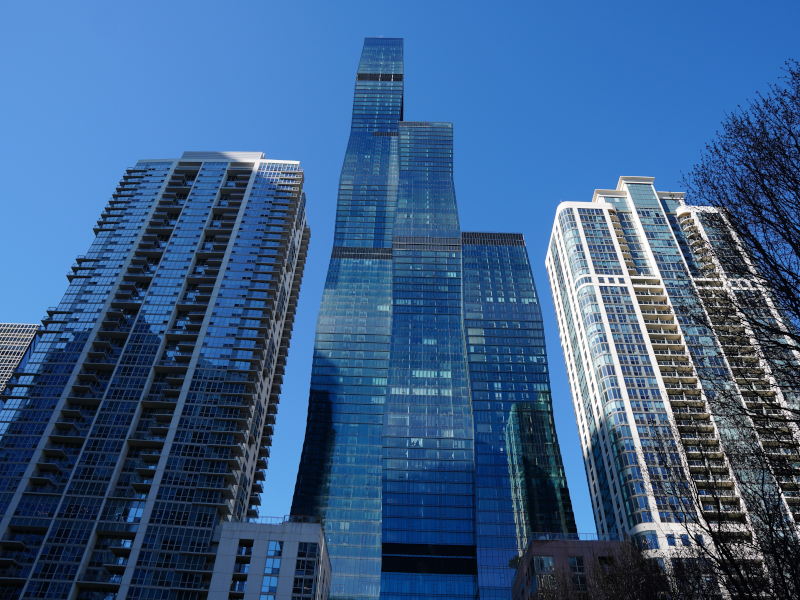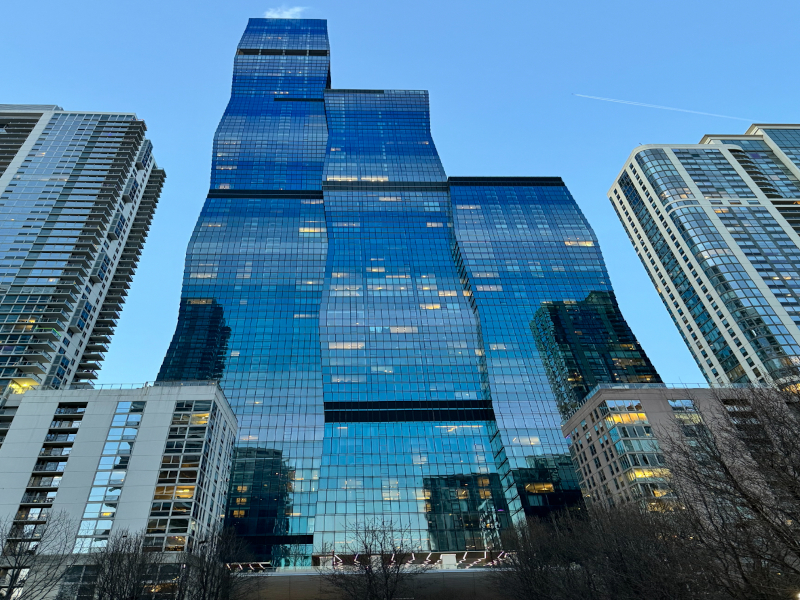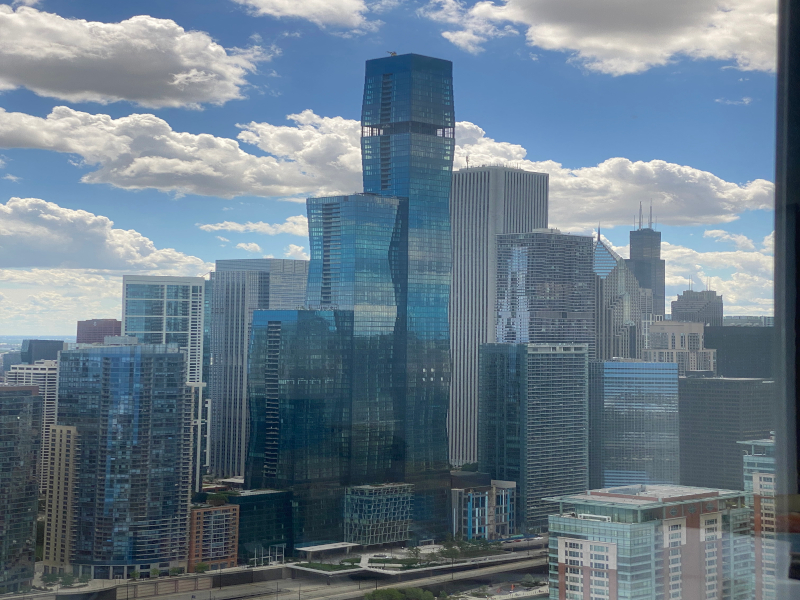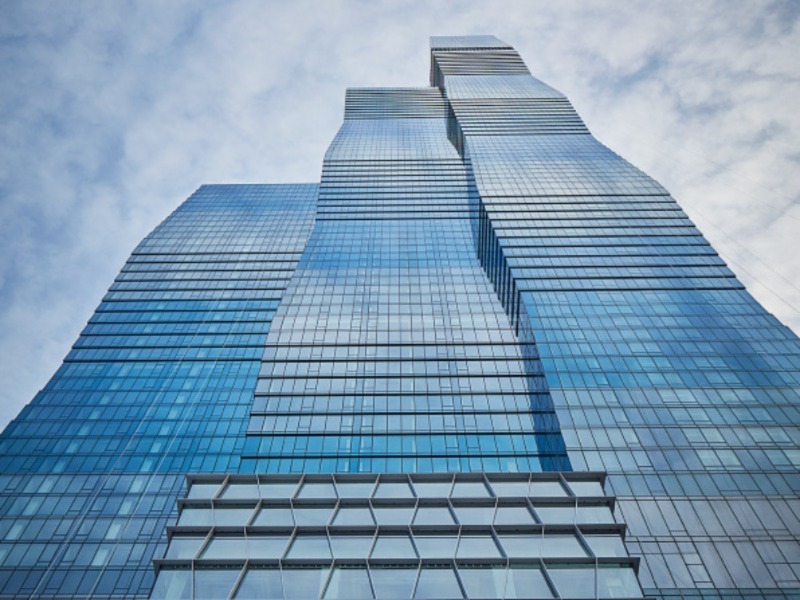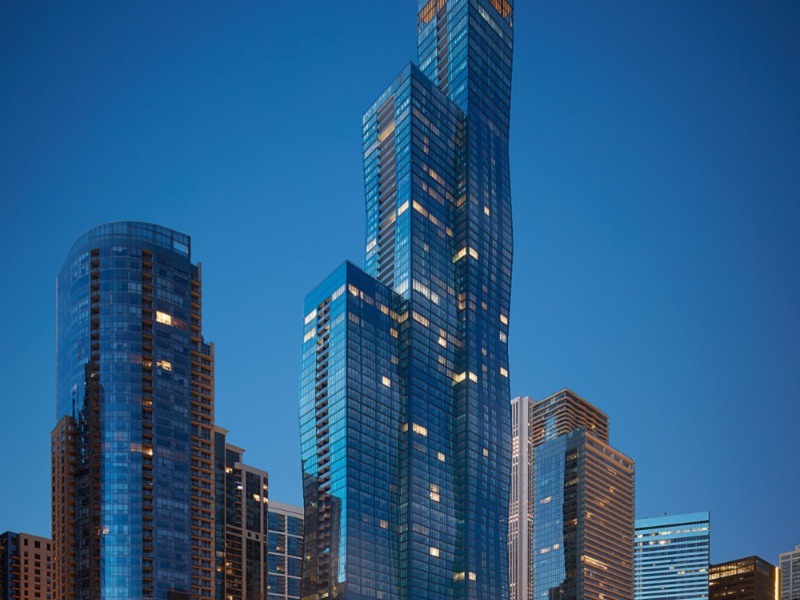The St Regis Chicago, formerly known as Vista Tower, is a 101-storey five-star hotel and residential skyscraper in Chicago, Illinois, US. It is the third tallest skyscraper in the city, after Willis Tower and Trump Tower, and the first building to be designed by a woman.
Designed by Studio Gang, the project broke ground in September 2016 and was initially developed by Magellan Development Group (Magellan) and China-based Dalian Wanda Group, which owned a 90% stake through its subsidiary Wanda Hotel Development Company.
Magellan, which previously held a 10% interest, acquired Wanda Hotel Development Company’s 90% interest in 2020. The investment in the project is $1bn.
Site utility work commenced in July 2016, before the ground-breaking. The residential component of the tower was completed earlier, with the hotel opening in May 2023.
The project was rebranded as The St Regis Chicago after Magellan Development Group collaborated with Marriott International’s St Regis Hotels & Resorts to open the hotel at the tower in November 2020.
The project was awarded ‘Best Tall Building in the 300m-399m category’ and ‘Best Tall Mixed-Use Building’ for 2022 by The Council on Tall Buildings and Urban Habitat.
The St Regis Chicago’s design details
The St Regis Chicago links the Lakeshore East community to the surrounding environment, providing urban connections and enhanced access to the Chicago River.
A pedestrian connection at the ground level provides access between the Riverwalk and the nearby community park’s outdoor recreational facilities.
The tower includes a trio of interlinked buildings, with the tallest building being 1,196ft (364.5m) high. The building has an area of 1.9 million square feet (176,515.8m²).
The tower design is based on a crystalline form called a frustum, which is a geometric design in the form of a truncated pyramid. The 12-storey frustums were alternated right side up and upside down to create the sculptural flow. The structures have eight corners instead of the typical glass rectangle at the end.
The wavy exterior of the buildings provides spectacular views for residents. The exterior is clad in a glass of five shades of blue to create a wave gradient across the height of the tower.
The smaller floors in the tower are clad in slightly darker glass to allow for more heat gain. The varying gradients of the glass cladding create different responses to various climatic conditions, thereby improving the building’s environmental performance. The building was designed to achieve Leadership in Energy and Environmental Design (LEED) silver certification.
A projecting glass cube houses the restaurant area of the tower. It is raised on stilt-like concrete columns to enable pedestrians and customers to pass through roads and pedestrian areas located in Lakeshore East.
Facilities at the St Regis Chicago
The building features 192 hotel rooms and 393 residential units with 295 parking spaces. Floors one to 11 house the hotel, including 159 luxurious guest rooms and 33 suites.
The hotel features several dining options such as a fine dining restaurant with private rooms and an outdoor terrace, the Miru all-day dining restaurant, Sky Bar with an outdoor terrace, The Coffee Bar on Eleven, and Tre Dita, a Tuscan steakhouse. The Drawing Room and Library lounge areas are present in the food and beverage spaces.
The St Regis Spa occupies 12,000ft² on the Wellness Floor. The St Regis Spa Suite provides a private space for VIPs, couples, and groups. The hotel’s fitness centre, overlooking the Chicago River, Navy Pier, and Lake Michigan, features modern equipment, a yoga studio, two private fitness rooms, and an outdoor sundeck. Additionally, a heated indoor pool with an outdoor terrace offers panoramic views of the city and lake.
The hotel offers more than 11,000ft² of top-tier event spaces, making it an ideal venue for celebrations, gatherings, and meetings. The 4,721ft² Astor Ballroom can accommodate up to 500 guests for receptions, while the third floor features Executive Function Spaces with four executive meeting rooms and more than 3,000ft² of pre-function space.
Located on floors 13 to 93, the residential units of the tower range from one-bedroom homes to five-bedroom penthouses.
The Sky 360 penthouses, rising from the 71st floor, are full-floor homes, which provide uninterrupted 360° views of Chicago and Lake Michigan.
The 83rd storey of the building consists of a Phantom floor to reduce swaying caused by high winds.
A resident-only amenity space, located on the 47th floor, features a sky terrace with amenities such as an outdoor pool, a kitchen, a private resident lounge and dining room, a fitness centre, a conference centre, a private viewing room, a golf lounge, and a kid’s activity room.
Contractors involved
McHugh Construction served as the general contractor for the project. It was responsible for the construction of the tower.
bKL Architecture was appointed as the architect of record for the project. Hirsch Bedner Associates Interior Design was selected as the interior designer for the hotel while Wanda HDI was the interior designer for the residences.
AES provided surveying services for the project while Snaidero USA supplied kitchen and bath cabinetry for the residential units of the tower.
Mackie Consultants performed civil engineering works while Ground Engineering Consultants (GEC) acted as the geotechnical engineer.
OLIN served as the landscape architect for the tower. The company collaborated with the architects and Mackie Consultants to design pedestrian and vehicular circulation patterns and to create green spaces around the buildings.
Kimley-Horn and Associates served as the traffic consultant while Magnusson Klemencic Associates was the structural engineer for the project.
Gensler was engaged as the hotel architect and RWDI Consulting Engineers and Scientists was appointed as the wind engineer for the building.
Curtainwall Design Consulting was appointed as the facade consultant while CD+M was contracted to serve as the lighting consultant for the hotel. Hugh Lighting Design served as the residential lighting designer.
Cini-Little, dbHMS, AGC Glass, KTGY Simeone Deary Design Group, FSS, WT Group/Innovative Aquatic Design, Lee Herzog Consulting and Shiner Acoustics are among the contractors also involved in the project.

